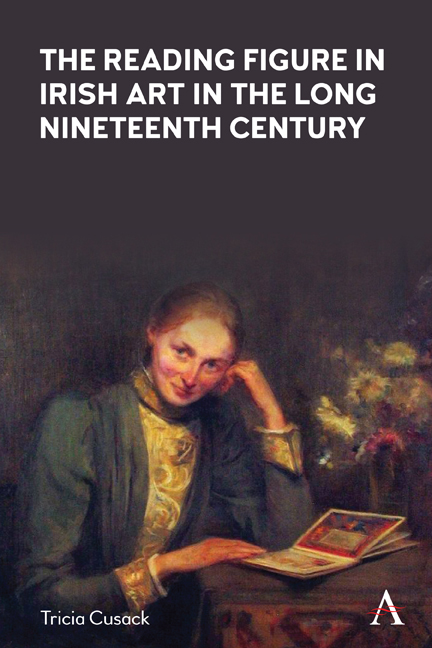Book contents
- Frontmatter
- Contents
- List of Figures
- Acknowledgements
- Introduction
- 1 Imperial Man, Manly Nationalism and the Unmanly Reader
- 2 ‘Creatures of a Different Breed’: Women Readers and Patriarchal Discourse
- 3 The Shaping of the New Woman in Ireland
- 4 The Silent Reader and the Fictive Viewer
- 5 A Room of Her Own: Four New Women in Dublin
- Conclusion
- Notes
- Works Referenced
- Index
3 - The Shaping of the New Woman in Ireland
Published online by Cambridge University Press: 27 April 2022
- Frontmatter
- Contents
- List of Figures
- Acknowledgements
- Introduction
- 1 Imperial Man, Manly Nationalism and the Unmanly Reader
- 2 ‘Creatures of a Different Breed’: Women Readers and Patriarchal Discourse
- 3 The Shaping of the New Woman in Ireland
- 4 The Silent Reader and the Fictive Viewer
- 5 A Room of Her Own: Four New Women in Dublin
- Conclusion
- Notes
- Works Referenced
- Index
Summary
The emergence and naming of the New Woman took place concurrently with movements in Ireland, England and elsewhere to establish women's civil rights. Dublin in the latter nineteenth and early twentieth centuries seems to have been a space of relative independence and creativity for women, at least for those in the more privileged generally Anglo-Irish sectors of society. This was a period of political and cultural ferment in Ireland, stirred by ideas of Irish nationalism and women's rights to suffrage and higher education. A number of women became politically active as suffragists or nationalists while others – or often the same women – were successful as writers and artists and patronised the arts. These confident creative and social interventions drew on and contributed to the constitution of the ‘New Woman’.
This chapter examines the idea of the New Woman in relation to the campaigns for women's suffrage and access to higher education in Ireland and their links with parallel movements in England. It argues that like these campaigns, the emergence of the New Woman was a transnational and transatlantic phenomenon. The close association between the Anglo-Irish and England, as well as the ability of Anglo-Irish women to travel and undertake art training in France and other European countries resulted in exchanges of ideas about women's rights, as well as cultural exchanges including literary and visual representations of the New Woman. Such transnational and cosmopolitan cultural sharing was in contrast to the ideology of Irish-Irelanders who turned geographically and symbolically to the west of Ireland for the authentic roots of a desired de-Anglicised Irishness and looked back in time to a heroic Gaelic culture.
The New Woman in Ireland was often Anglo-Irish and commonly a reader. As well as serving as some compensation for restricted educational opportunities even among otherwise privileged women, reading was regarded as an attribute of the intelligent, cultivated woman. Literary sources from various countries, including Irish writings, helped to create the concept of the New Woman. It was also shaped by visual imagery from England where Punch magazine parodied it.
This chapter focuses on the historical, political and literary contexts in which the concept of the New Woman emerged. In Ireland, the idea of the New Woman was expanded and enriched by the distinctive portraits of women readers which are examined in detail in the following chapters.
- Type
- Chapter
- Information
- Publisher: Anthem PressPrint publication year: 2022



